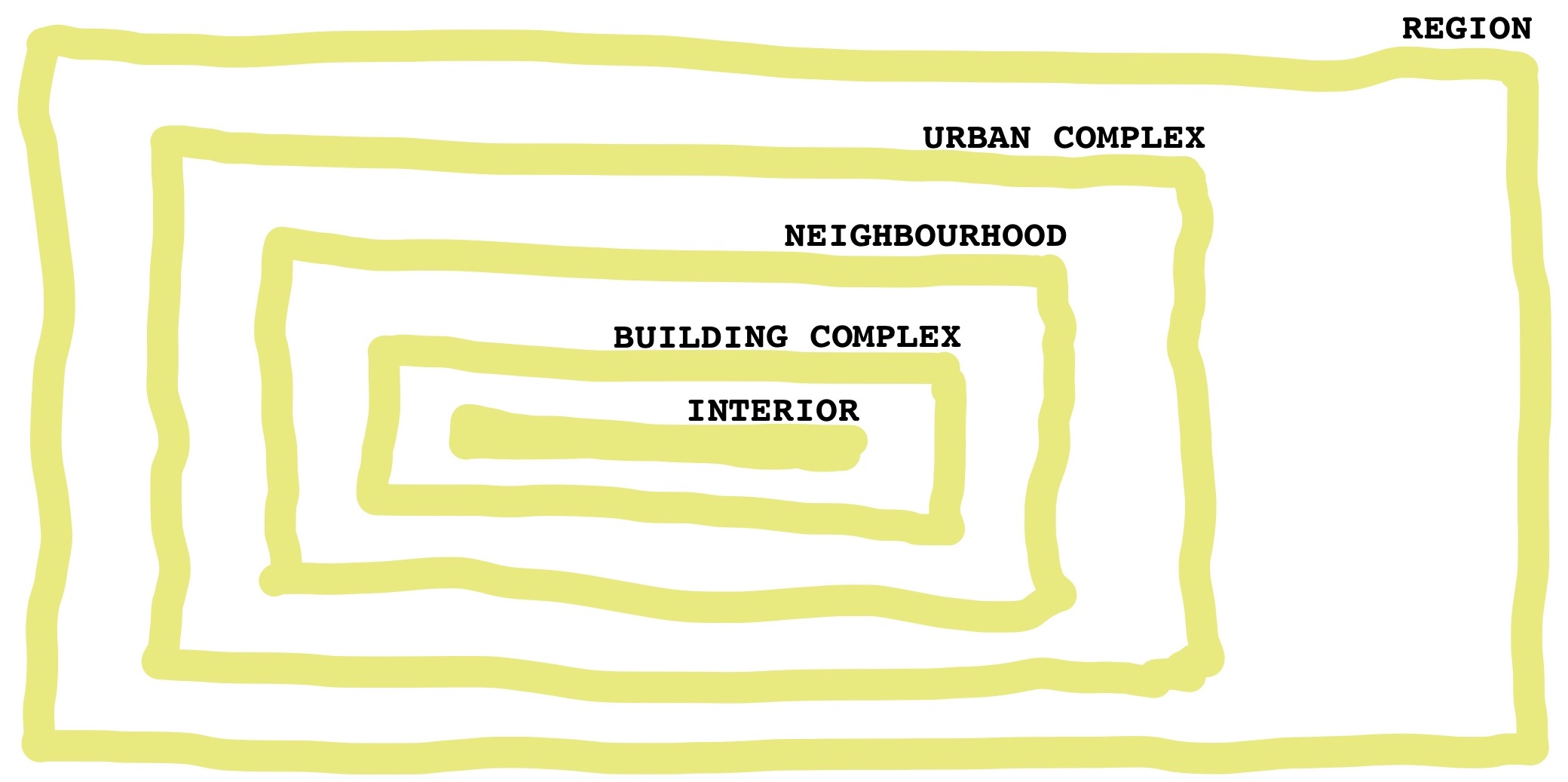A pattern language - Chris Alexander’s original - is a language of evolving of both the spatial organisation of built environment, and the experience of inhabiting it.
It ranges from - the order of a region, and relationships of an urban area to surrounding ‘countryside’, - through to the order of a neighbourhood, street, dwelling or room; and - to the hands-on, in situ construction of a building organised on these lines.
>See Christopher Alexander, Sara Ishikawa & Murray Silverstein (1977), *A pattern language - Towns, buildings, construction*, Oxford University Press. pdf ![]() .
.

Framework - Zones of focus in Alexander's pattern language
It ranges from *Pattern #1 Independent regions* ("Within each region, work toward those regional policies which will protect the land and mark the limits of the cities") and related patterns including *#2 The distribution of towns* and *#3 City-country fingers*; to . . *#140 Private terrace on the street* and *#145 Bulk storage*, *#159 Light on two sides of every room,* *#180 Window place* and *#203 Child caves*.
There are 204 patterns in the ‘design’ sections of this language, and a further 49 in the ‘build’ section.